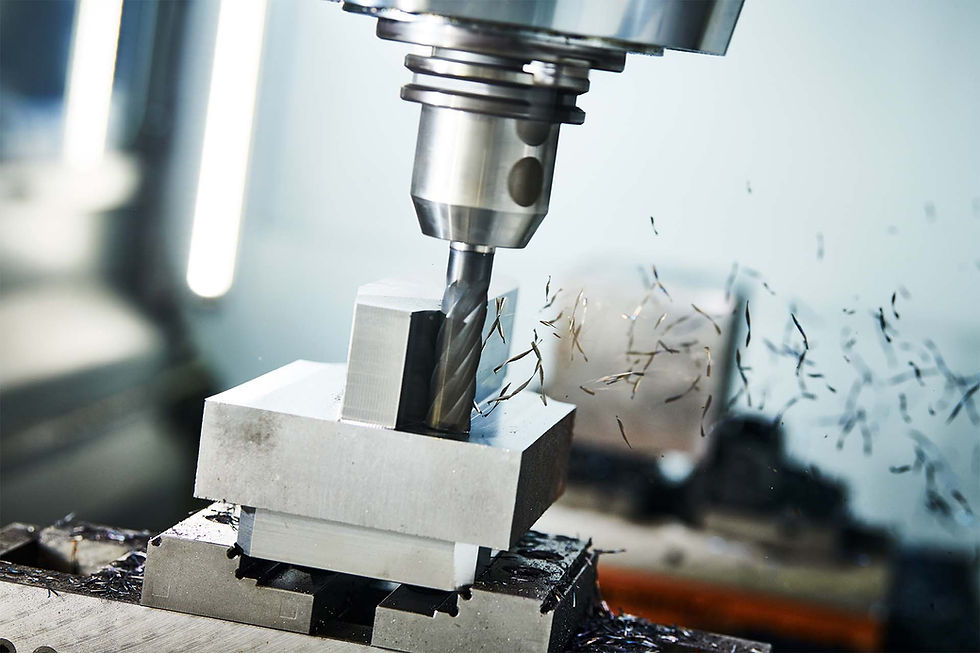CNC Machining in the Jewelry Industry: Techniques and Applications
- Calvin Wu
- May 3, 2023
- 3 min read
Outline:
1. Introduction
a. The growing role of CNC machining in the jewelry industry
b. The advantages of CNC techniques for jewelry manufacturing
2. Key CNC Techniques in Jewelry Making
a. Milling and engraving
b. Stone setting and micromachining
c. Polishing and surface finishing
3. Advanced Applications of CNC in Jewelry Production
a. Rapid prototyping and 3D printing
b. Laser cutting and engraving
c. Lost wax casting and electroforming
4. Customization and Personalization through CNC Technology
a. Unique and intricate designs
b. Increased efficiency and reduced production time
5. The Future of CNC in the Jewelry Industry
a. Innovations and advancements in CNC technology
b. Industry trends and predictions
Introduction
The jewelry industry has always been an important sector for craftsmanship and artistic expression. With the advent of Computer Numerical Control (CNC) machining, the possibilities for design and precision in jewelry manufacturing have expanded tremendously. In this article, we'll explore the various techniques and applications of CNC machining in the jewelry industry, and how it's revolutionizing the way jewelry is designed, created, and customized.

Key CNC Techniques in Jewelry Making
1. Milling and Engraving
CNC milling and engraving machines can create intricate designs, patterns, and textures on a variety of materials, including precious metals, gemstones, and even wood. The high level of precision and control offered by CNC machines allows for the production of complex jewelry pieces with unparalleled accuracy.

2. Stone Setting and Micromachining
CNC technology also allows for precise stone setting and micromachining, enabling jewelers to create stunning pieces with multiple gemstones set in intricate patterns. This high level of precision ensures that each stone is set securely and consistently, improving the quality and durability of the final product.
3. Polishing and Surface Finishing
CNC machines can also be used for polishing and surface finishing, ensuring that each jewelry piece is smooth and free of imperfections. This not only improves the appearance of the final product but also enhances its comfort and wearability.
Advanced Applications of CNC in Jewelry Production
1. Rapid Prototyping and 3D Printing
CNC technology has made rapid prototyping and 3D printing more accessible and efficient, allowing jewelers to create realistic models of their designs before committing to the final production process. This enables designers to test and refine their ideas, ultimately producing higher-quality jewelry pieces.

2. Laser Cutting and Engraving
Laser cutting and engraving are advanced CNC techniques that offer even greater precision and control in the jewelry making process. These methods allow for the creation of intricate patterns and designs on a variety of materials, including metals and gemstones, without any physical contact, minimizing the risk of damage to the materials.
3. Lost Wax Casting and Electroforming
CNC technology has also improved traditional jewelry making techniques, such as lost wax casting and electroforming. These methods enable the creation of intricate and complex designs, with CNC machines ensuring a higher level of accuracy and consistency in the final product.
Customization and Personalization through CNC Technology
1. Unique and Intricate Designs
CNC machining allows for the creation of unique and intricate designs that were previously impossible or difficult to achieve through traditional jewelry making methods. This opens up new possibilities for jewelry designers to express their creativity and produce truly one-of-a-kind pieces.
2. Increased Efficiency and Reduced Production Time
CNC technology significantly reduces the time it takes to create custom jewelry pieces, as the machines can work quickly and accurately, automating many aspects of the production process. This increased efficiency allows for faster turnaround times, making it easier for customers to receive their personalized jewelry in a timely manner.
The Future of CNC in the Jewelry Industry

1. Innovations and Advancements in CNC Technology
As CNC technology continues to advance, we can expect to see even greater levels of precision and control in the jewelry making process. This will lead to the creation of even more intricate and complex designs, pushing the boundaries of what is possible in the world of jewelry.
2. Industry Trends and Predictions
The use of CNC technology in the jewelry industry is expected to grow as more jewelers recognize the benefits of this advanced manufacturing technique. Customization and personalization will continue to be a driving force in the industry, and CNC machining will play a crucial role in making these services more accessible and efficient for both jewelers and consumers.
Conclusion
In conclusion, CNC machining has revolutionized the jewelry industry, providing new possibilities for design, precision, and customization. As the technology continues to advance, we can expect even greater innovations and trends in the world of jewelry making, offering exciting opportunities for both jewelry designers and consumers.



Comments